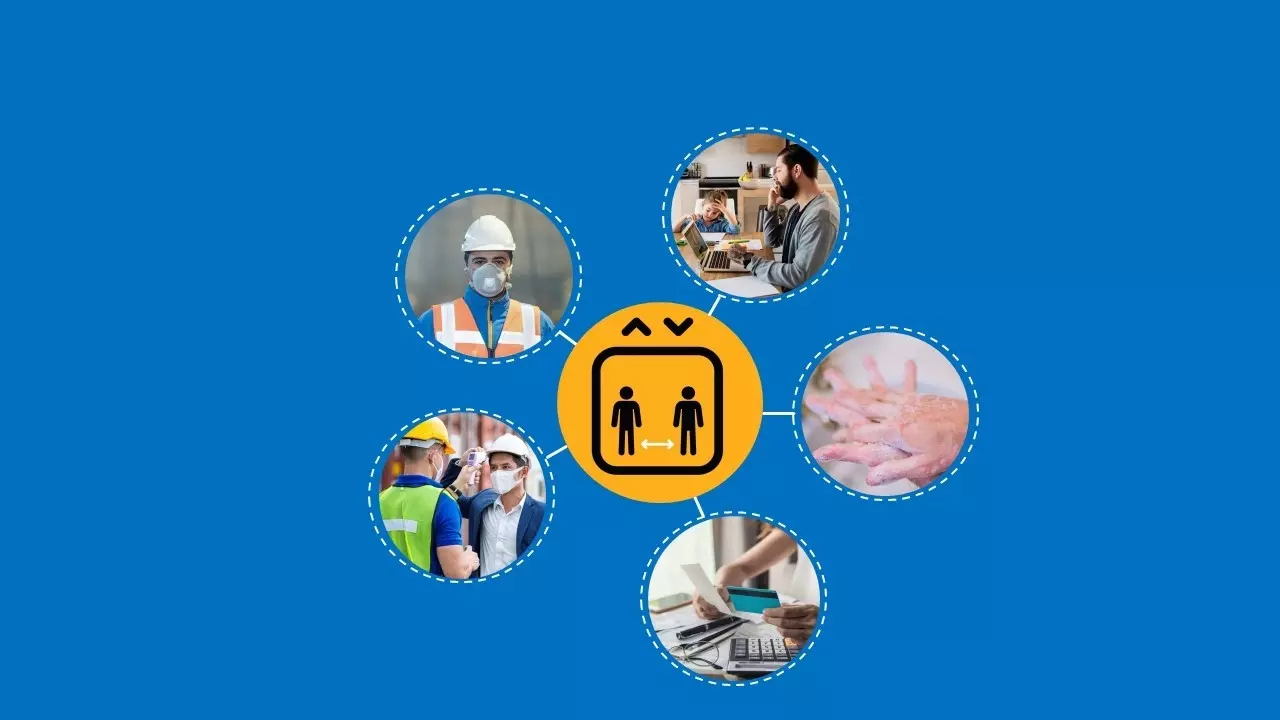Despite varying degrees of disruption across the industry, most manufacturers expect the pandemic to have a lasting impact on their workforce, operations, and finances. According to a recent survey from the National Association of Manufacturers:
- 67% of manufacturers continued operations amid disruption
- 80% expect the pandemic to have a financial impact on their business
- More than half still anticipate challenges attracting and retaining talent in the next 12 to 18 months
Over the last few months, our team at Kronos + Ultimate Software has collaborated with many of our manufacturing clients to understand their workforce and operational challenges and helped them quickly adapt practices, procedures, and policies to keep their businesses running amidst disruption.
Now the focus must shift to continuing these critical efforts while planning and deploying operational strategies and technologies for the future.
This is the first in a three-part blog series to discuss how manufacturers can drive business continuity by considering three guiding principles:
1. Accommodating the new employee experience
2. Enabling continuous operational agility
3. Fueling lasting financial resiliency
Today, we focus on the first principle, accommodating the new employee experience.
While disruption to business operations, the supply chain, and finances have been significant, employers also must recognize their workforce is facing a different reality at home as well as at work.

Today, employees are adapting to new challenges such as elevated concerns for their health and the health of their families, additional childcare challenges and complexities, and enhanced financial stressors.
They are also experiencing a drastically different work environment. Enhanced safety procedures such as requirements attesting to wellness and wearing face masks are just two examples. When planning strategies for the future, manufacturers must account not only for the business, but for their people as well.
What concerns are front of mind for the workforce and how can manufacturers address them?
1. Being safe on the job while mitigating risk
Employees aren’t just concerned with being safe on the job. They’re also concerned about mitigating the risk of illness for themselves and their families. Mobile employee surveys can help alleviate those concerns by requiring employees to attest to whether they have been symptomatic, or been in contact with someone that has, before they report into work. This helps to lower the risk for transmission of illness in the workplace.
Contact tracing is also emerging as a critical tool for driving workplace safety. We recently conducted a survey in conjunction with Workplace Intelligence and found that, globally, 75% of employees say they trust their employer to create a physically safe and healthy work environment. This trust extends to contact tracing at work, where these tools can enable managers to get ahead of the potential for illness to spread.
With today’s constraints on labor resources, it’s also vitally important to ensure that employees receive the rest time needed to recharge. Fatigue management capabilities within workforce management software help with accounting for adequate rest between shifts, enforcing meals or breaks during a shift, or proactively alerting managers when labor rules are not adhered to; ensuring your employees receive enough rest. This is also critical for maintaining compliance.
2. Feeling informed & connected
For employees to feel informed and connected, manufacturers must practice consistent, relevant, and timely communication to the workforce. This communication can come in many forms, whether through a quick update on a timeclock, pre-shift meetings with managers, corporate emails, or mobile communications.
In addition, technologies built specifically for non-desk workers are available that offer further opportunities to connect across shifts, locations, and languages, and help employees connect with colleagues across the organization. This is especially effective for hourly employees that don’t have a corporate email address but do have a personal mobile device.
The opportunity to deliver real-time updates keeps employees informed and connected, creating a better overall employee experience.
3. Managing work-life balance, flexibility, & financial stress
Managing work-life balance and flexibility is top of mind for employees, especially considering the challenges they face today. Manufacturers should look for opportunities to help their employees through the personal challenges in their lives. For example, mobile-ready workforce management technology enables employees to easily access their schedule from anywhere and take actions including swapping shifts, or submitting time off requests. This flexibility saves employees time and provides the consumer-grade experience they expect.
Mobile-first extensible solutions also enable employees to submit requests for earned wage access. Earned wage access allows employees to access the wages they have already earned before the next scheduled payroll. This is an important benefit for employees, as some are facing enhanced financial stressors.
The Takeaway
To navigate this “new normal,” manufacturers must put people-first practices in place that cultivate a safe and engaged workforce while building trust and transparency within the organization. Doing so will improve not only employee engagement, but also the employee experience.



